For a seed to achieve its greatest expression, it must come completely undone. The shell cracks, its insides come out and everything changes. To someone who doesn’t understand growth, it would look like complete destruction. — Cynthia Occelli
It’s a jungle out there
When I first started making wine it was a “fun little hobby” that required maybe a month or so of my time each year and resulted in a few cases of wine that cost less per bottle than the cheap plonk I normally bought at the store. And if I was lucky it might actually taste as good… or even better.
Then when I had the still baffling idea of turning my winemaking into a business I figured it might cost me a few more bucks, a few more hours, and a few more brain cells (not from drinking, but from studying). I was sure it would be the perfect “second career thing” to do in my “pre-retirement” years—you do know that 70 is the new 50. And that it would still allow me enough time to make a film or produce a book or two and, most critically, work on my golf game.
But now that I’ve gone all in, encouraged by my business partner Bruce—and rightfully so—that we’re too old to go at this thing slowly, I realize that commercial winemaking is a full-time gig. Especially so if you’re dabbling in viticulture, which you absolutely should be if you really want to make great wine. If you don’t know what goes into growing premium grapes you can’t possibly be successful in turning them into premium wine.
But don’t get me wrong, I’m not complaining. In fact I’m still happily engaging full immersion into everything wine-related. I’m just a little bummed that working in the vineyard now competes with golf for those magical cool morning hours in wine country before the sun flips its turbo switch.
The last few weeks have been a great example of all of this with non-stop winegrowing chores, sourcing equipment needed for the upcoming harvest, and even taking a final exam. And, as anyone can see driving through the valley, the vineyards around here all desperately need attention. As reported in my newsletter of late May, the early rains and warmer temperatures this spring created an explosion of growth. But it came right during flowering and fruit set—that was the good news—so there wasn’t much you could do but just watch your canes grow right before your eyes—that was the bad news. By the time it was safe to jostle the vines a bit—repositioning canes, thinning leaves and all the normal intrusive parts of canopy management—it was almost too late. The vines were winning.
In two of the three tiny vineyards I manage I literally couldn’t see down between the rows. Canes were ten feet long and paying visits to the row next door, or even the row beyond that. If I didn’t do something quickly I was likely to have a mildew disaster on my hands. It was time for some emergency intervention, so I turned to my viticulture guru friend Brad Danitz, who grows the most beautifully tended one-acre vineyard of Cabernet Sauvignon that you have ever seen. Brad had already hedged his vineyard two weeks prior (of course he had) and his rows of vines looked right out of the pages of House and Garden.
Conventional wisdom has it that you should wait until the canes stop growing and the vine turns its energy towards ripening the grapes before you hedge anything. Otherwise you’re likely to end up with prolific lateral growth and even some second crop development. Brad just smiled that kind of smile that folks do when they’ve made a life out of bucking conventional wisdom. He showed me a nifty trick for exorcising latent flower clusters on lateral shoots and encouraged me to get out my clippers and get to work, quickly.
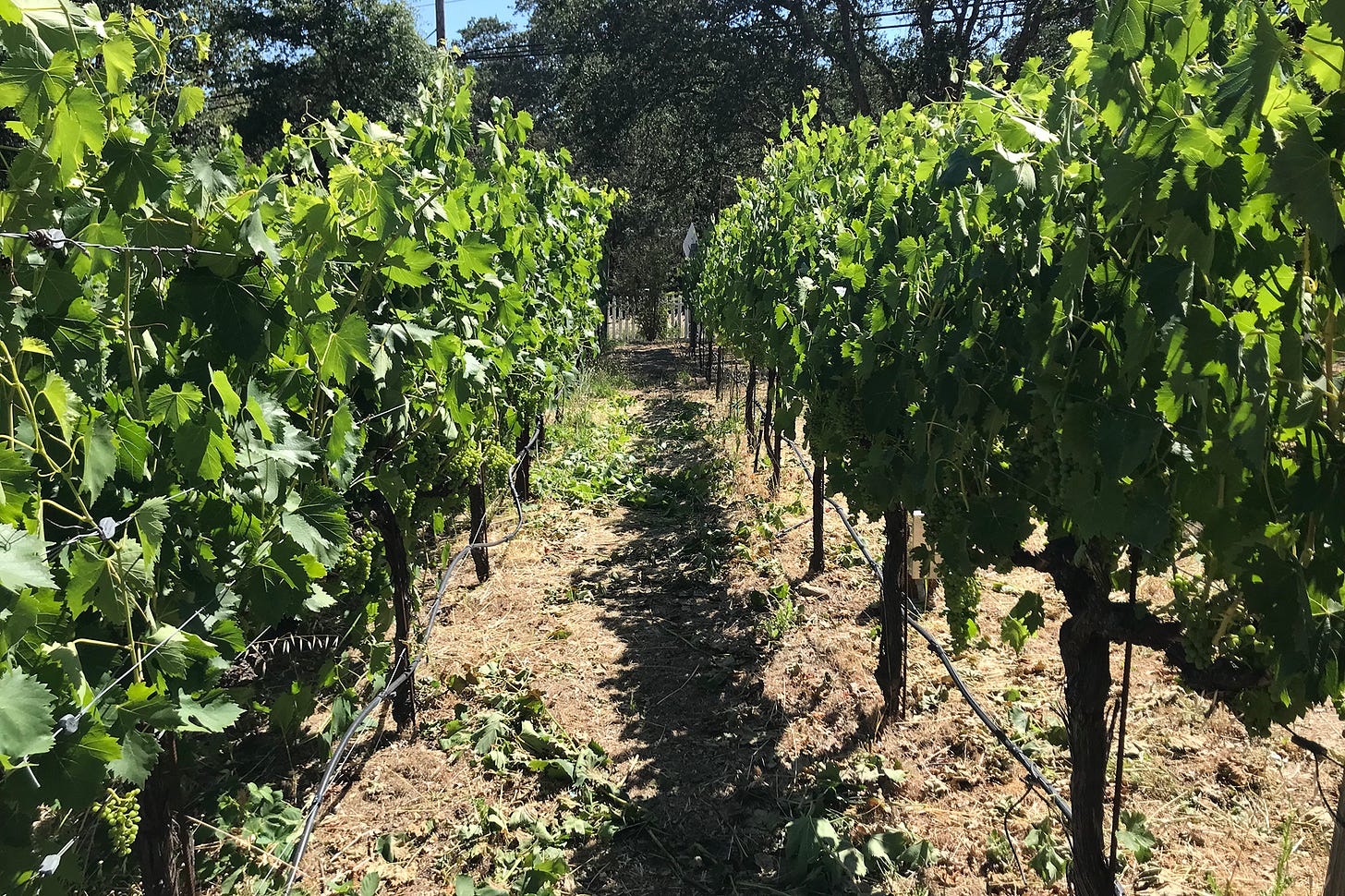
My first target was Hassan’s vineyard, the one up near Glen Ellen that I’ve been restoring from fire damage. Last summer’s intensive canopy management to expose basal bud areas to adequate sunshine resulted in very fruity growth this year (as it’s supposed to), and lots of very vigorous canes. I had little choice but to take Brad’s advice and wade into the thick of it wielding my clippers like a Samurai sword. It’s slow going and a lot of work repositioning canes and thinning leaves, but as I clean up each row I’m rewarded with many more grape clusters than we had last year. Wow, my efforts of the past two years might actually be working!
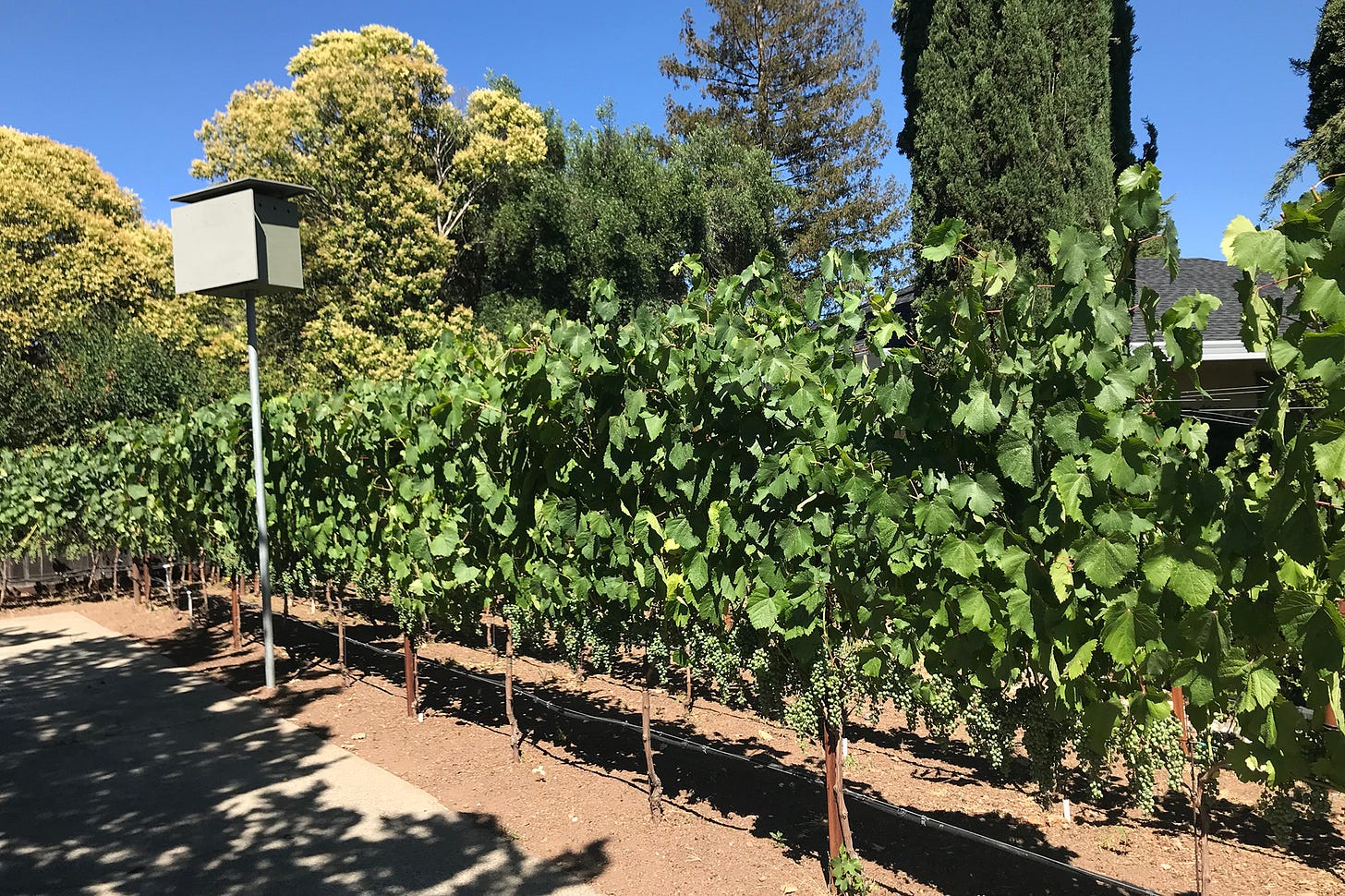
I’ve already mentioned the high vigor of my (well Bobbie’s, actually) estate Malbec vineyard multiple times. We laid down our cordon arms this past winter and knew to expect a lot of growth this spring and summer. But we never considered that it would be as intense as it was. Just like at Hassan’s, I took the role of a GI barber on enlistment day and was ruthless in my buzz cuts—think Wahl shears with a #1 blade. Fortunately, Bobbie’s vineyard is much smaller than Hassan’s (only 64 vines) and I was able to get through it in only a few mornings. By the time I had repositioned all the canes and tied up those that were drooping to the ground I had a fantastic line of grape clusters all in the proper fruit zone.
Whoa! So that’s how they do it?!
One new challenge I did have with Bobbie’s vineyard is leaf thinning—a necessary chore that facilitates effective spraying for mildew, opens the vine to sunlight for bud development, and allows breezes to dry it out from rain or heavy dew. Malbec leaves are huge, honestly approaching dinner-plate size. So it’s challenging to thin them enough for light and wind passage without thinning too much and risking sunburn. Fortunately, most of Bobbie’s rows run east to west and the fruit hangs directly under each row, so those big ole leaves contribute enough shade for most of the day and provide for the “dappled” sunlight they tell you to strive for in viticulture class.
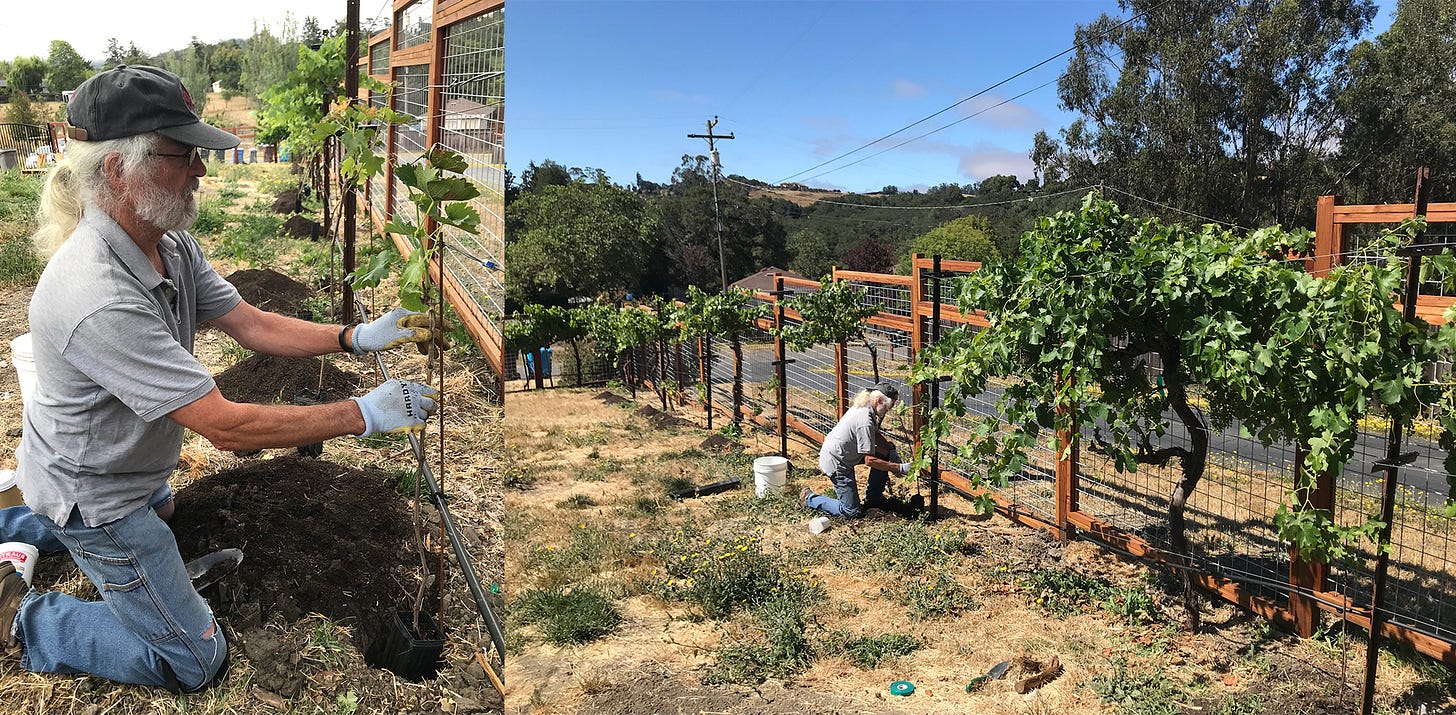
My final vineyard challenge was at Amit’s and Preeti’s up on Sonoma Mountain. The 20-year-old vines along the new fence they built and around the gardens in the back all needed serious thinning. They too had responded to my “do or die” restorative pruning method and suddenly I was faced with canes loaded with grape clusters growing along the ground outside of the old trellis.
This was a two-pronged attack, as horticulturist Gelacio Herrera and his crew rebuilt the dilapidated trellis that circled the property while my neighbor Tom McKean (you’ll remember him from last year’s harvest) and I planted 100 new uber and magnum vines—50 Syrah, 25 Grenache and 25 Mourvèdre—in between the 70 old Syrah and Grenache vines that still existed. Once Gelacio had finished the new trellis I re-tucked all the old vines and applied the same hedging. There are a surprising number of grapes on those old vines and we may yet get a 30-gallon barrel of wine out of them this year. The new fence will keep the deer out but I have no idea yet about the birds. Damn, it’s all so tenuous even when you think you’ve done everything right.
Now what’s that about never buying retail?
“Perfect. Beautiful. I’ll take twenty.”
Whew! I hang up the phone, relieved to have finally found some seemingly perfect once-used barrels for our upcoming vintage. I hadn’t given it much thought really, confident that my previous sources for 1X barrels would come through with what I needed this year. But no such luck. “I’ve had a higher than normal demand for barrels this summer and I’m completely out,” replied one source. “All gone, check back with me next March,” replied another. What was going on? After two terrible years of reduced grape yields due to fires and drought, it seemed like everyone was making up for lost time coming into the 2022 vintage.
The same was true for barrel racks. I needed ten used, seven-inch, double bar racks and I couldn’t find any for sale within a reasonable travel distance. I’m at that stage in my winemaking career where I can’t yet afford the luxury of new racks or barrels, and frankly there isn’t truly an absolute need for them. I’d rather put the money into the very best grapes I can buy.
Brand-new steel racks from Western Square—de rigueur in the industry—can cost anywhere between $185 and $250 apiece, but they are bomb proof and will last for decades. New French oak barrels are in the $1,200 range, but a used-once barrel that has been properly maintained will still impart plenty of oak phenolics for at least another couple of vintages, and can be supplemented with oak additives or staves if needed.
I ran some want ads on the industry classified boards and was rewarded with two great suppliers. First, a winery in Lodi (yeah, still a bit of a drive) that was converting most of its barrels to steel tanks and had 364 used racks to sell. I got in on day one and secured 10 of them for $25 each. The next day a winery in Walla Walla, Washington, swooped in with a big semi and took the remaining 354. Whew!
Then I made contact with the very kind folks at Vineyard 7 & 8, a premier Napa winery atop Spring Mountain, high above St Helena. They age their world-class Cabernet Sauvignon for 18 months in new French oak barrels from celebrated tonnelleries (cooperages) like Taransaud, Darnajou, and Baron. The barrels are maintained impeccably during their tenure and are painted in the traditional vin rouge style of many European and South American wineries. This special wine-colored pigment, made from red wine must, is applied to the center “belly” of the barrel and helps to cover up any wine spills and drips around the bung, leaving the barrel looking beautiful. At the end of this aging period they sell a percentage of their once-used barrels to other winemakers to make room for new barrels.
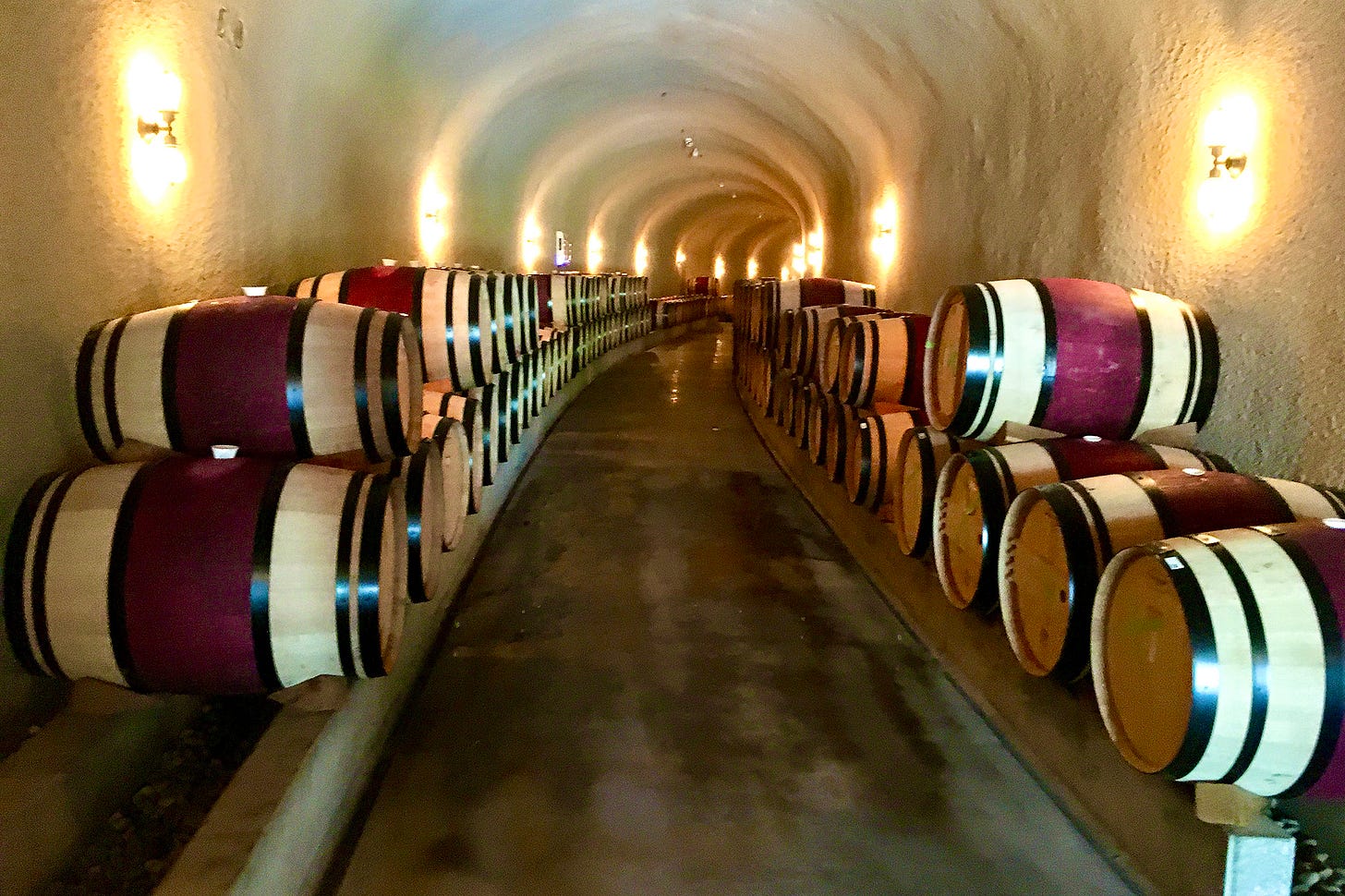
I think the winery owner saw right through my amateur attempts at barrel negotiations—and my rental U-Haul truck—and took pity on a poor, starving winemaker. He cut me a great deal on 20 of his once-used barrels—$200 each!—and even threw in the delightful tag team of brothers Pedro and Jose Garcia to help me load the barrels (watch video below). I couldn’t have been happier with the purchase!
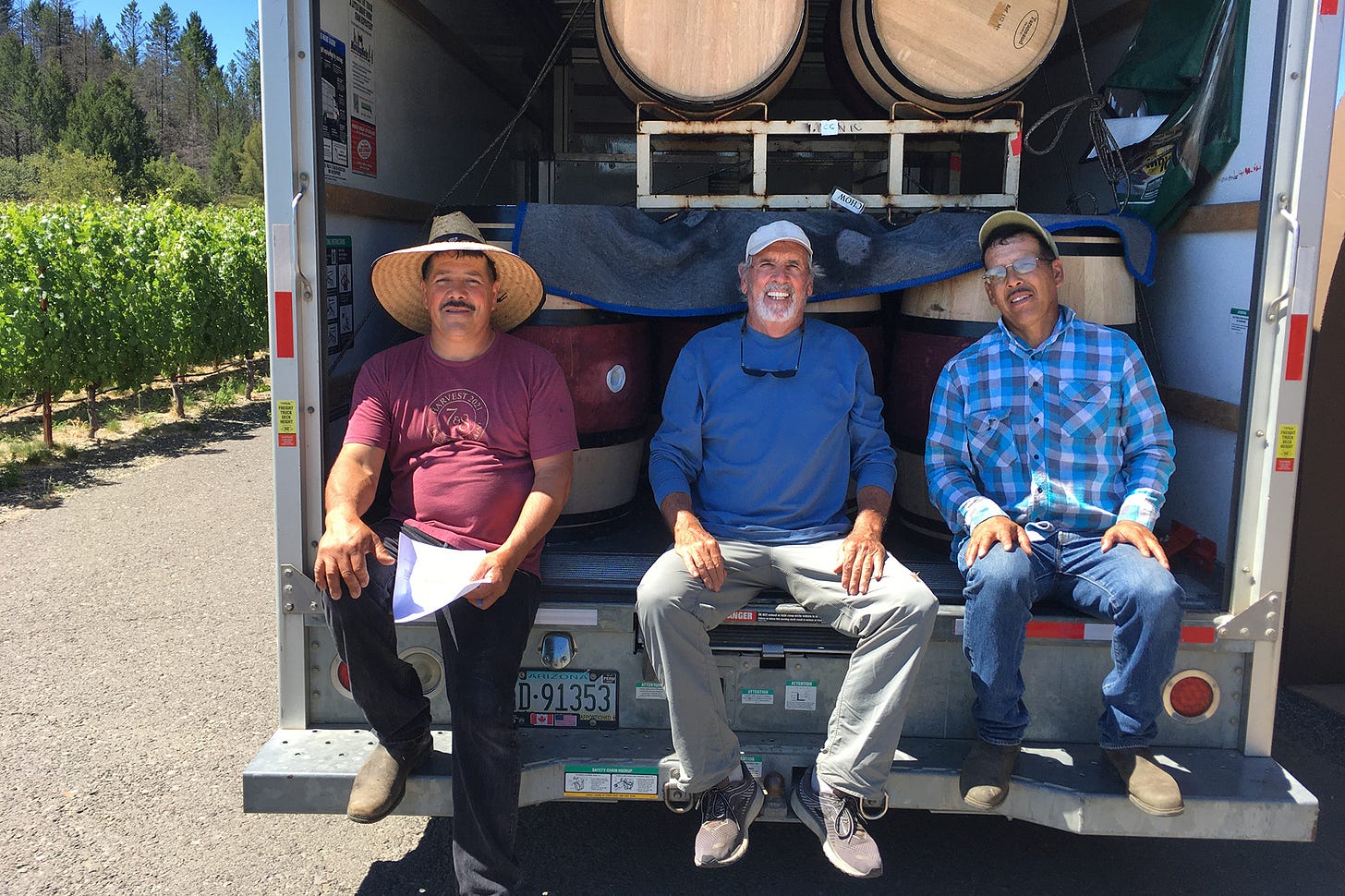
All and all it turned out to be a pretty long but very fruitful day. I left at 5:30 a.m. to drive east over to a large commercial vineyard in Napa and meet the consolidated shipment from Duarte Nursery in Modesto that was carrying my 100 vines for Amit’s and Preeti’s vineyard (described above). I then drove those vines back west to Sonoma and on up north to the vineyard site off Bennett Valley Road on Sonoma Mountain. I dropped off the vines and then raced back east to U-Haul to drop off the van I had rented the night before for the vine transport, and to pick up the 17-foot truck I now needed to transport the barrels. Deb and I drove the U-Haul truck back north to Santa Rosa and up over Calistoga Road to the top of Spring Mountain and Vineyard 7 & 8.
Pedro and Jose were waiting for us with all the barrels ready to go at the entrance to one of their wine caves. It was obvious that these were men with many years’ experience handling 100-pound oak barrels, and they rolled them around and hefted them into the truck as if they weighed nothing. We were able to stand 18 barrels on end and put the final two in a rack above them tied securely to the interior truck rails. Driving them back to Magnolia, my custom crush facility, was simply a matter of controlling the speed of a truck that now weighed an extra ton down the winding road from the summit of Spring Mountain to the valley floor in Santa Rosa. Easy peasy. We rewarded ourselves along the way with refreshing, brain freeze-inducing frozen acai bowls at Picazo’s. It was hot out!
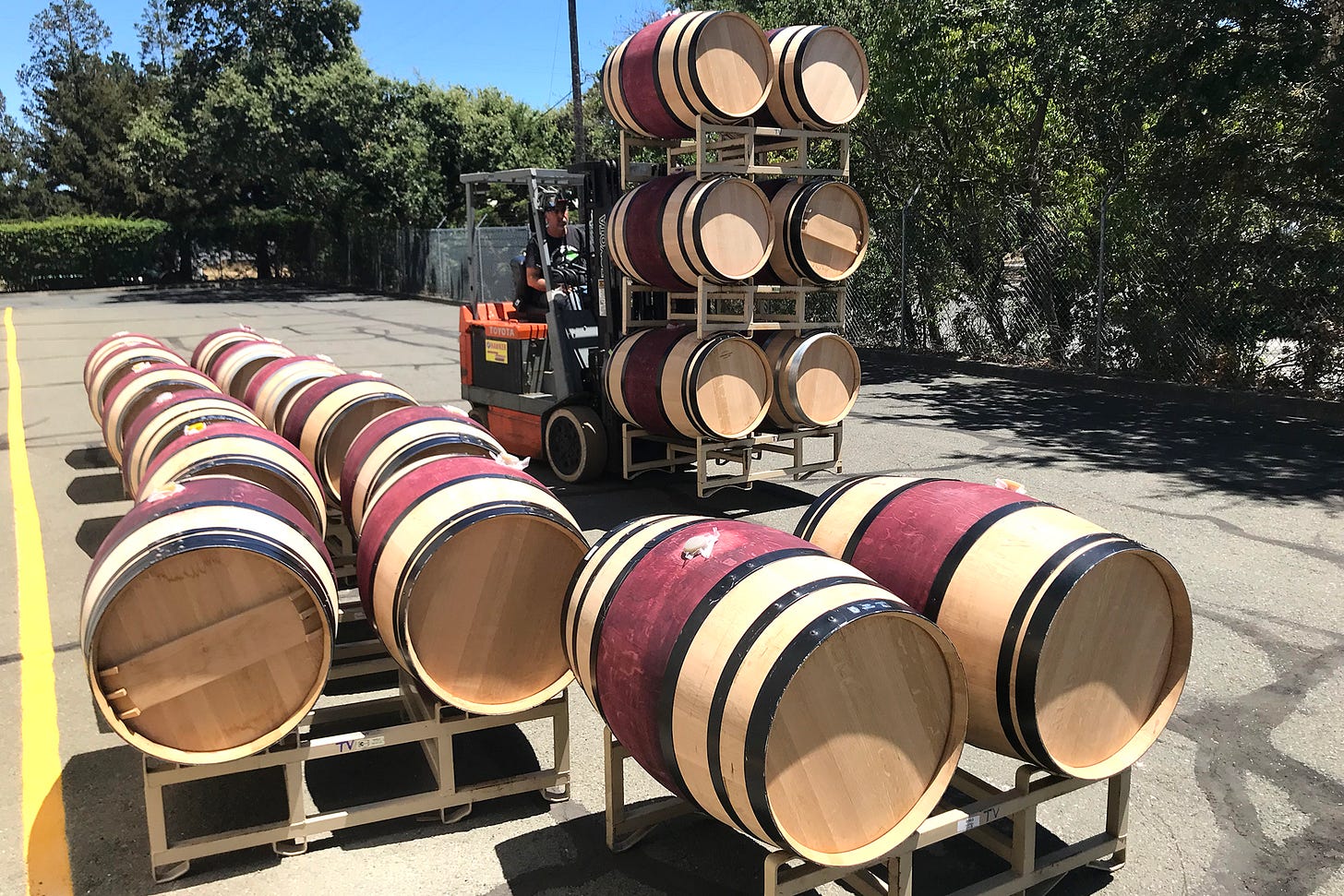
Back at Magnolia, cellar master Sergio Nava Santa Cruz helped me unload all the barrels and get them situated on my newly acquired racks. We gassed each barrel with a short burst of sulfur dioxide to protect them from any microbial growth while they remained empty and then plugged each one with a silicone bung pushed through a sheet of wax paper (silicone reacts badly to SO2 and the wax paper helps reduce that contact). Sergio then used a forklift to expertly transport the barrels—six at time!—into the winery to await vintage 2022.
School’s out for summer… well, sorta
You have just returned from the supermarket with two bottles of white wine from an appellation that is better known for anarchists than winemakers. Surprisingly, the wine is delicious, with a full mouthfeel and just a touch of oak. You enjoy several glasses with family members. While pouring out the last glass from the first bottle, you see, to your horror, what can be described as a cloudy, slimy globule which slides out of the neck and plops into your glass. You compose yourself and set about to investigate this surprise. Armed with your knowledge from your Quality Control and Analysis for Winemaking class, you know you are up to the challenge. The texture of the slimy mass makes you think of Monty Python and wonder if the former anarchists were channeling the French and thinking, “I’ll unclog my nose in your general direction!” The alcohol of the wine was 13.7% and you were more than satisfied with the quality, not noticing any visual or organoleptic flaws—just the special present, which was about the size of a large slimy lima bean, at the bottom of your glass. Which microbe/s are presumptive as being responsible for the anarchists’ gift? BRIEFLY describe how you came to that conclusion. (5 pts.)
So went one of the whacky questions on my Quality Control and Analysis for Winemaking course final. I was barely holding on to my “A grade” streak in the UC Davis Winemaking Certificate Program with this my second to last course, so I needed to do well on the final. My professor’s somewhat twisted sense of humor wasn’t exactly helpful, but it was entertaining as I sweated out the 75 point-comprehensive exam three weeks ago.
Not only did I find this course challenging (lots more chemistry, math and microbiology), but I was also getting burnt out having taken five back-to-back, accelerated, thirteen-week courses since January of 2021. The final course I have yet to complete for the Certificate is Wine Stability and Sensory Analysis. It’s being offered this summer and again in the winter. But I need a break from all the critical thinking and formulas. Summer is busy enough, as you’ve just read about above, and there’s no way I could handle the course during harvest season even if it was offered in the fall.
So winter it is.
In the meantime I signed up for UC Davis’s unique and purportedly wildly popular OIV Wine Marketing Program. Taught for eight hours a day over a single five-day stretch by contemporary industry experts, this one-week class offers an up-to-the-minute picture on the ever-changing landscape of how to successfully brand, market and sell wine in the United States. Even at $1,400 for the week, it sounds priceless.
The OIV Wine Marketing Program starts tomorrow. I’ll report back soon.
I also signed up for Clark Smith’s Fundamentals of Wine Chemistry, which he bills as “an enology degree in six easy lessons.” It’s actually 24 hours of video classes broken up into six sections, and a 551-page syllabus, which you can go through at your own pace. I bought it ($400) as a refresher course for everything I’ve learned in the Winemaking Certificate Program over the past year and a half. I plan to dedicate one week this August to digesting his course and re-engaging with all the pertinent principles just before harvest begins.
Smith’s official bio reads:
Clark Smith is one of California’s most widely respected winemakers. He has built many successful brands, consults on five continents, judges at several competitions and teaches at six universities. Smith has made wine for 61 vintages (including 14 in the Southern Hemisphere). Wine Business Monthly named him 2016 Innovator of the Year and listed him among the 48 Most Influential People in Wine in 2018.
He is a bit of a self-proclaimed revolutionary (fist raised!). His philosophy on winemaking seems to be: “Learn all the rules so you can understand them well enough to break them.” He wrote a book about that: Postmodern Winemaking, which was Wine & Spirits Magazine’s Book of the Year. I’m finding it very inspiring.
Finally, back to that question on my Quality Control and Analysis for Winemaking course final exam. Everyone knows the answer is Pediococcus parvulus, which can produce glucans in wine that will appear as ropes or long silky threads, or the anarchists’ slimy globule. The telltale characteristic that these are the guilty microbes is that the wine still tastes delicious with a nice mouthfeel—exhibiting no organoleptic defects.
Yeah, by the grace of Bacchus I aced the final. My streak survives!










